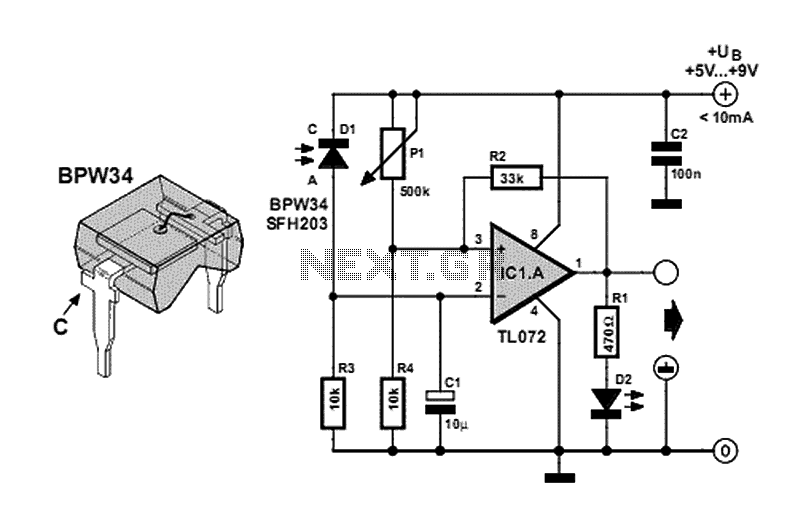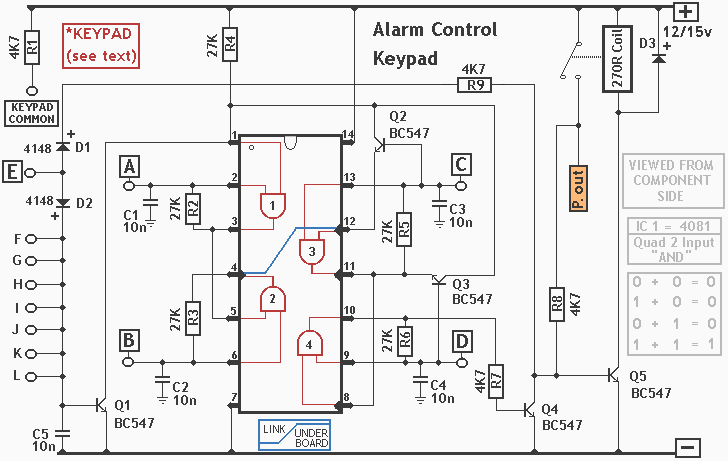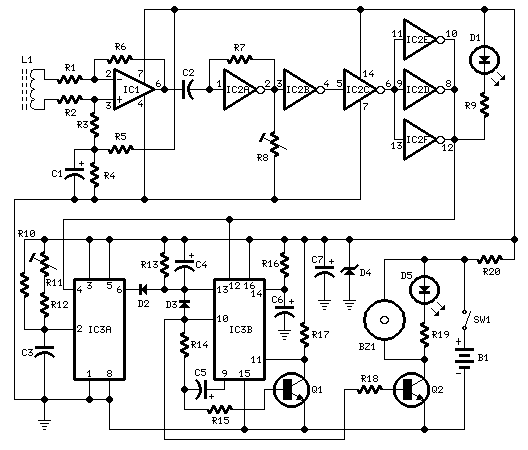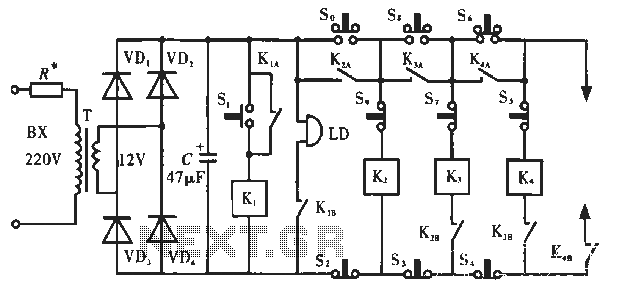
darkness activated alarm
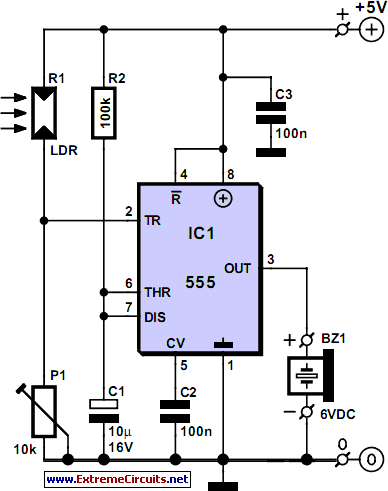
Most darkness-activated alarms utilize operational amplifiers and various logic integrated circuits. This design presents a more cost-effective solution using the timeless 555 timer configured in monostable multivibrator mode. Components R2 and C1 form a timing network that produces a one-second delay. When the light-dependent resistor (LDR) is in darkness, its resistance increases, causing pin 2 of the 555 timer to be pulled to ground. This action triggers the monostable configuration, activating a 6-volt piezo buzzer. The preset resistor P1 is adjusted according to the ambient light levels. The circuit can be installed on a wall in a home. Once P1 is calibrated for the current ambient light, any shadow cast by an individual entering the room or hallway will activate the alarm.
The circuit operates on the principle of detecting changes in light intensity using an LDR, which is a variable resistor that decreases its resistance when exposed to light. In this configuration, the LDR is positioned in such a way that it remains in darkness when the area is unoccupied. The 555 timer, configured as a monostable multivibrator, is triggered when the LDR's resistance is sufficiently high, pulling the voltage at pin 2 low. This low voltage activates the timer, which then outputs a high signal at pin 3 for a predetermined duration, set by the values of R2 and C1.
The timing components, R2 and C1, are crucial for determining how long the buzzer will sound after the alarm is triggered. By selecting appropriate values for these components, one can adjust the duration of the alarm to suit specific requirements. The piezo buzzer, which operates at 6 volts, produces an audible sound when activated, alerting occupants of the presence of an intruder or unexpected movement.
The adjustable preset resistor P1 allows for fine-tuning of the circuit's sensitivity to ambient light conditions. This feature ensures that the alarm will only activate in low-light situations, preventing false alarms during the day or in well-lit environments. Installation on a wall is straightforward, and the compact nature of the circuit allows for easy integration into home security systems.
Overall, this circuit provides an efficient and economical solution for creating a darkness-activated alarm system, leveraging the reliability of the 555 timer and the simplicity of passive components. Proper calibration and placement will enhance its effectiveness in detecting motion in dimly lit areas.Most darkness activated alarms employ opamps and some logic ICs. Here, a less expensive approach is shown based on the eternal 555, this time in monostable multivibrator mode. Components R2 and C1 represent a one-second network. When the LDR (light dependent resistor) is in the dark, its resistance is high, pulling pin 2 of the 555 to ground.
This triggers the monostable and the (active!) 6-volt piezo buzzer will sound. Preset P1 is adjusted depending on ambient light levels. The circuit may be fitted on a wall in your home. Assuming P1 has been set for the existing ambient light level, the shadow cast by anybody entering the room or hallway will trigger the alarm. 🔗 External reference
The circuit operates on the principle of detecting changes in light intensity using an LDR, which is a variable resistor that decreases its resistance when exposed to light. In this configuration, the LDR is positioned in such a way that it remains in darkness when the area is unoccupied. The 555 timer, configured as a monostable multivibrator, is triggered when the LDR's resistance is sufficiently high, pulling the voltage at pin 2 low. This low voltage activates the timer, which then outputs a high signal at pin 3 for a predetermined duration, set by the values of R2 and C1.
The timing components, R2 and C1, are crucial for determining how long the buzzer will sound after the alarm is triggered. By selecting appropriate values for these components, one can adjust the duration of the alarm to suit specific requirements. The piezo buzzer, which operates at 6 volts, produces an audible sound when activated, alerting occupants of the presence of an intruder or unexpected movement.
The adjustable preset resistor P1 allows for fine-tuning of the circuit's sensitivity to ambient light conditions. This feature ensures that the alarm will only activate in low-light situations, preventing false alarms during the day or in well-lit environments. Installation on a wall is straightforward, and the compact nature of the circuit allows for easy integration into home security systems.
Overall, this circuit provides an efficient and economical solution for creating a darkness-activated alarm system, leveraging the reliability of the 555 timer and the simplicity of passive components. Proper calibration and placement will enhance its effectiveness in detecting motion in dimly lit areas.Most darkness activated alarms employ opamps and some logic ICs. Here, a less expensive approach is shown based on the eternal 555, this time in monostable multivibrator mode. Components R2 and C1 represent a one-second network. When the LDR (light dependent resistor) is in the dark, its resistance is high, pulling pin 2 of the 555 to ground.
This triggers the monostable and the (active!) 6-volt piezo buzzer will sound. Preset P1 is adjusted depending on ambient light levels. The circuit may be fitted on a wall in your home. Assuming P1 has been set for the existing ambient light level, the shadow cast by anybody entering the room or hallway will trigger the alarm. 🔗 External reference
